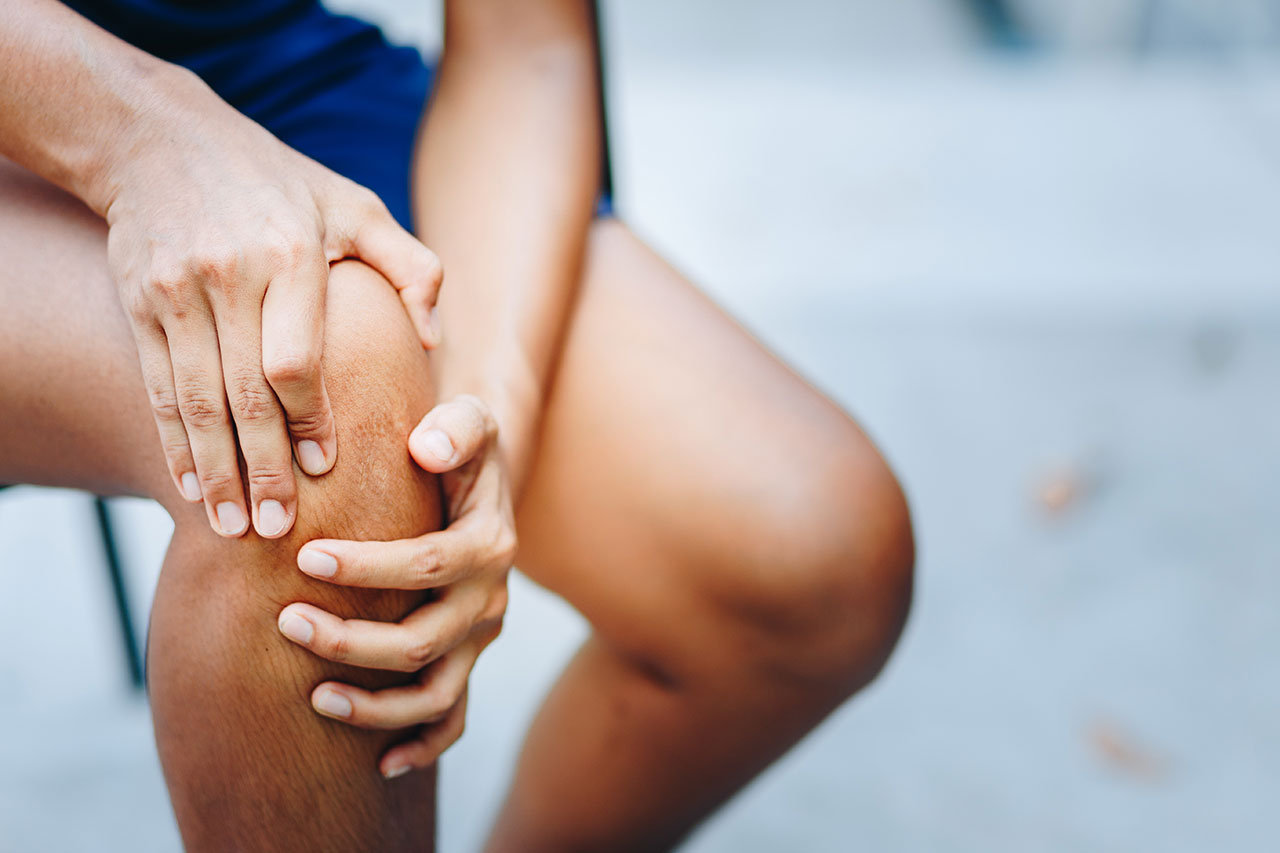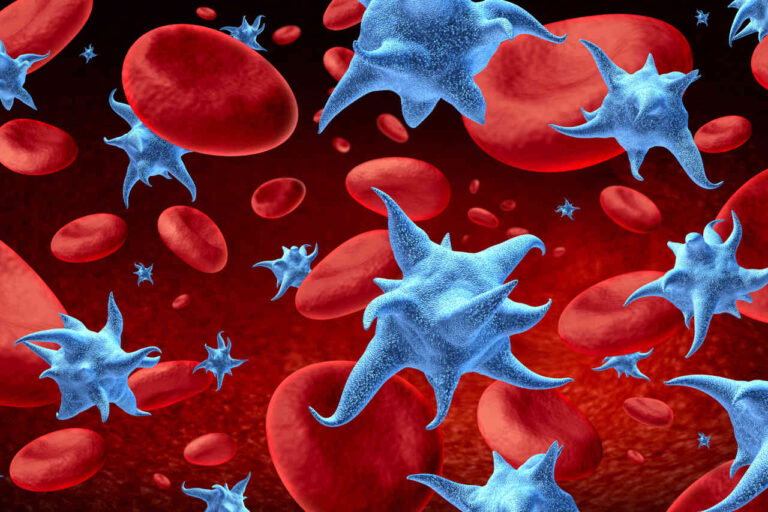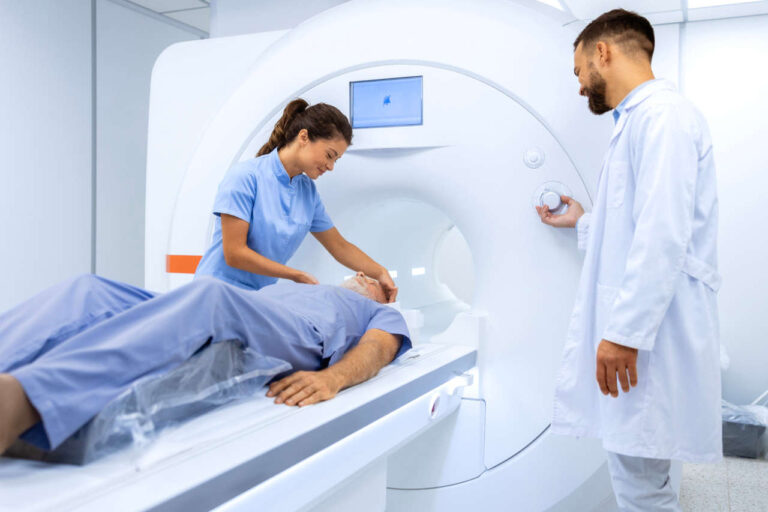
The term “myopathy” generally means muscle weakness, while the term “necrotizing” means cell death and necrosis. Necrotizing myopathy, also known as necrotizing autoimmune myopathy (NAM) or immune-mediated necrotizing myopathy (IMNM) is characterized by cell death and necrosis of muscle cells, particularly the muscles closer to the center of the body. This causes generalized muscle weakness and difficulty moving. It is considered a very rare form of idiopathic inflammatory myopathy, where instead of the normal findings of inflammatory markers, histopathological findings indicative of cell death and necrosis are found. This particular form is quite rare, but the incidence is increasing due to the increased rate of detection. Currently, the incidence rate of all idiopathic inflammatory myopathy is about 1.16 to 19 million cases per year, and necrotizing myopathy represents 10% [1].
Get IVIG Prior Authorization
What Causes Necrotizing Myopathy?
The exact cause is poorly understood, but necrotizing myopathy is thought to be an autoimmune disorder. In an autoimmune disorder, a certain trigger stimulates the body to attack its own cells and tissues. The triggers that can lead to necrotizing autoimmune myopathy include:
- Statins: A group of drugs used to control the level of cholesterol in the body.
- Cancer: Certain types of cancers are associated with necrotizing myopathy.
- Connective tissue disease: This is a disease that affects the connective tissue (the tissue that connects all the parts of the body together). Muscles are one of the biggest organs in the body and are composed of connective tissue, which may explain this association.
- HIV: HIV is a virus that reduces the immune response of the body to almost every foreign object, germ, or bacteria. In some cases, the body reacts to HIV infection by attacking its own cells, including muscle cells, causing myopathy.
Signs And Symptoms Of Myopathy
Almost all types of myopathy present with similar symptoms, making it difficult to distinguish the type of myopathy without further testing. Patients who have necrotizing myopathy may experience symptoms such as the following:
- Weakness in the muscles closest to the middle of the body, such as the shoulders, forearms, thighs, hips, neck, and back.
- Difficulty standing up from a chair.
- Difficulty climbing stairs.
- Falling or difficulty getting up from a fall.
- Difficulty raising arms over the head.
- A general feeling of tiredness.
Other muscles may be affected as well, although far less common. These include:
- Muscles of the neck, causing difficulty in head and neck movement.
- Muscles of the throat, causing difficulty swallowing or voice changes.
- Chest muscles, causing difficulty breathing.
- Muscles of the heart.
How Can Immune-mediated Necrotizing Myopathy Be Diagnosed?
- Electromyography: This is an electric testing of the muscles to check their strength. These tests usually show myopathic symptoms (meaning symptoms of weakness) but are not particularly indicative of the cause or type of myopathy.
- Blood markers: Blood tests show autoimmune markers, mainly SRP and HMGCR autoantibodies. These are autoimmune antibodies produced when the body is exposed to the above-mentioned triggers and are possibly the main cause. Highly elevated levels (up to 10 times the normal levels) of creatine kinase enzyme can also be seen. However, seronegative findings (meaning no change in the blood markers and antibodies) is common in 20% of the patients, so blood tests should not be a definitive determinant of the absence of the disease.
- MRI: Magnetic resonance imaging (MRI) is a commonly used test to check the condition of soft tissues. With necrotizing myopathy, muscles show signs of edema.
- Muscle Biopsy: This is the most definitive test of necrotizing myopathy, where a small sample is taken and analyzed. It is the only test that can differentiate it from other idiopathic inflammatory myopathy (IM) or polymyositis (PM), whose signs and symptoms are nearly indistinguishable from one another. Unlike IM and PM, necrotizing myositis (being an autoimmune disease rather than an inflammatory one) shows no signs of inflammation or infection of the tissues but instead shows signs of necrosis and cell death.
- Cancer Screening: Since cancer could be associated with some cases, cancer screenings may be performed.
Get IVIG Copay Assistance
Speak to a SpecialistCategories of Necrotizing Myopathies
Researchers are beginning to distinguish three different categories of necrotizing myopathy. Each has different treatments and risk factors. The categories are based on the presence of different autoantibodies found in the blood.
Patients with SRP Autoantibodies
SRP autoantibodies appear in blood tests of many people who have symptoms of necrotizing myopathy. Sudden and extreme muscle weakness can occur, and there may also be cardiac involvement.
Patients with HMGCR Autoantibodies
HMGCR is a key enzyme in the production of cholesterol. Patients who have HMGCR autoantibodies and use statin medications for high cholesterol may develop this kind of statin-induced necrotizing myopathy.
All Other Patients
All other patients are classified by some experts in a third, separate group of necrotizing myopathy. These patients do not have SRP or HMGCR autoantibodies.
Is Necrotizing Autoimmune Myopathy Painful?
Since myopathy is a disease of the muscles, myalgia (muscle pain) is often an accompanying symptom. Pain comes from the necrosis and death of muscle cells, which act like toxins until they are cleared away by the blood. Pain can also result from impaired physical activity, which, in the long run, leads to more muscle weakness and wasting.
Can You Recover From Necrotizing Myopathy?
There is no known cure for necrotizing myopathy. Since the problem lies within the body’s immune system being sensitized to attack the body’s cells, it is not possible to cure such a disease as you cannot turn off a patient’s immune system. However, the condition can be controlled, and patients can lead a normal life in most cases.
What Is The Treatment For Necrotizing Myopathy?
Treatment of immune-mediated necrotizing myopathy is often a multifold approach:
Removal of the Cause
While some cases have no apparent cause, most cases come with one of the associated triggers mentioned above. Removal of the cause ensures the problem does not progress. Patients on statin therapy must consult their physician to stop or change their drugs. Patients who have cancer should discuss the best options available to control both diseases simultaneously. Treatment for connective tissue disease and HIV infections usually involves corticosteroids.
Corticosteroids Therapy
Corticosteroids are the main line of treatment. They fight off inflammation and increase blood and lymphatic flow to wash away toxins while simultaneously helping suppress the overactive immune system. The initial dose is usually high, but it is then reduced to a maintenance dose.
Since steroids, especially over prolonged periods, have many adverse side effects (i.e., weight gain, elevated blood sugars, thinning of skin), the introduction of steroid-sparing medications will be considered by your doctor.
Additional drugs to suppress the immune system may be added to steroids, sometimes at the beginning of treatment and other times after it has been determined that steroids are effective.
Immuno-suppressive therapy
Since the main problem is with the immune system, immunosuppressive drugs are often needed. The most commonly used drugs are methotrexate, mofetil, azathioprine, and rituximab. Immunosuppressive drugs can be used individually or, more commonly, in combination with corticosteroids to yield the best results. They are used for the initial treatment period, and the patient may or may not need a maintenance dose afterward.
Get Your IVIG Dose
At-Home InfusionImmunoglobulin therapy
Immunoglobulin comes from antibodies extracted from plasma from thousands of blood donors. IVIG is the intravenous method, and SCIG is given subcutaneously under the skin.
Some studies have shown that statin-exposed HMGCR autoantibody-positive patients have improved dramatically with IVIG, whereas statin-naive HMGCR autoantibody patients may be refractory to immunoglobulin therapy.
Exercise
Staying in shape to keep muscles strong is an essential aspect of the treatment of necrotizing myositis. This may be difficult initially with the generalized muscle weakness and inability to move normally, but with treatment, movement becomes easier and physical exercise must become part of the treatment routine. Your doctor may start by referring you to physical therapy or a rehabilitation center. An exercise plan curated by your healthcare team is most effective and ensures that you do not injure yourself.
Diet and Nutrition
Eating a well-balanced diet may be beneficial for overall health for those with necrotizing myositis.
Treatment with corticosteroids has many side effects, including weight gain and elevated blood sugars, so your diet may need to be adjusted for these conditions.
There is no single medication or treatment timeline as response differs from patient to patient. However, treatment is considered successful when signs and symptoms diminish and the range of motion increases. Success is also indicated serologically by the reduction in the amount of creatine kinase in the blood.
Home Infusion
We Come To YouIs Necrotizing Myopathy Fatal?
Necrotizing myopathy is a newly defined form of myopathy, with not much evidence regarding its long-term effects. However, the disease mostly affects the proximal muscles, so muscle weakness is common but is never fatal. Very few cases report muscle weakness in more essential muscles such as chest muscles, throat muscles, and cardiac muscles. In these cases, patients presented with more severe symptoms of shortness of breath, difficulty eating, and cardiac arrhythmia. Correct diagnosis is essential for these cases, which may prove fatal if misdiagnosed and subsequently mistreated. However, if correctly treated, improvement of the symptoms usually occurs quickly.
REFERENCES:
- Immune mediated necrotizing myopathy https://www.orpha.net/consor/cgi-bin/OC_Exp.php?lng=EN&Expert=206569. Accessed on April 19, 2022.
- Necrotizing myopathy https://www.myositis.org/about-myositis/types-of-myositis/necrotizing-myopathy/ Accessed on April 20
- Immune-mediated Necrotizing Myopathy (IMNM) https://understandingmyositis.org/myositis/necrotizing-autoimmune-myopathy/ Accessed on April 21, 2022.













